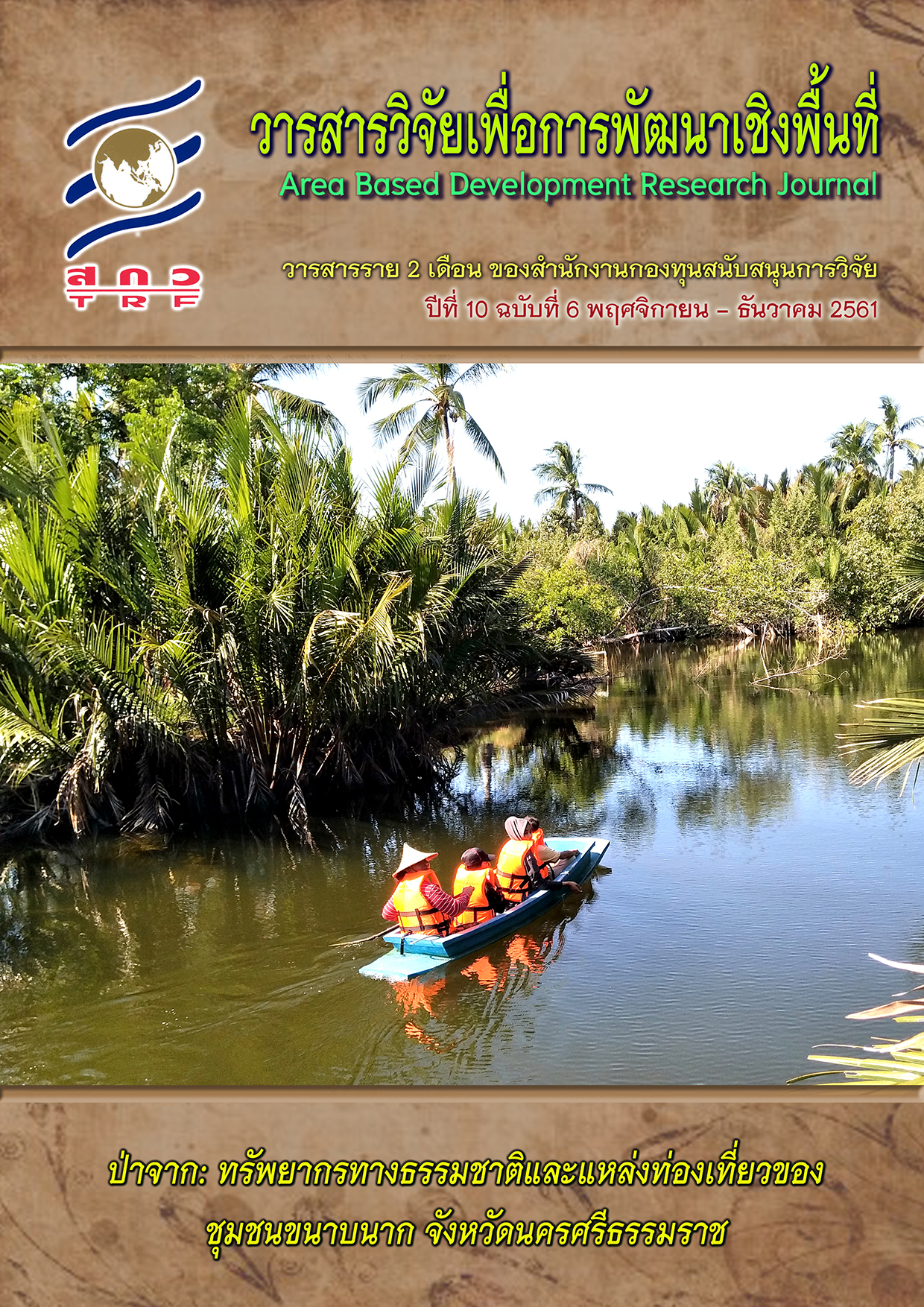Nipa Palm: Natural Resources and Tourist Destination of Khanap Nak Community, Nakhon Si Thammarat Province
Main Article Content
Abstract
The aim of this study is to investigate the importance and value of nipa palm stands in relation to the local way of life of the residents in Khanap Nak community in the province of Nakhon Si Thammarat, as well as to develop a tourist route that will lead to tourism and conservation of nipa palm stands in the community. The study involved the participation of the community, and 12 key informants were selected for in-depth interviews by snowball sampling. Group brainstorming was performed for the purposes of raising awareness of the importance and value of nipa palm stands, planning and designing tourist route in collaboration with the community, determining tourism seasons, and taking a trial trip along the designed route with 20 tour operators, tour guides and tourists in order to survey their satisfaction of the route. The results suggest that nipa palm stands had importance and value to the community in 5 aspects, which include 1) being the source of conversation of the local way of life, 2) being the source of raw materials for food preparation, 3) being the source of raw materials for making supplies, 4) being the source of income generation for local residents, and 5) being the source of natural conservation. In terms of development of tourist route as a tool to conserve natural resources, the uniqueness of Khanap Nak community to be presented to the tourists and visitors was the relationship between the local people and nipa palm stands. The theme of the designed tourist route was “Visiting nipa palm stands, seeing the local way of life of Khanap Nak community at Pak Phanang river”. The route was designed in circle with a total distance of 14.6 kilometers which can be completed by travelers in a half-day trip or a whole-day trip, depending on the activities and participation arranged by the community. According to the trial trip, the participants – namely, operators of lodgings/hotels, tour guides and tourists - reported a high level of satisfaction with an average score of 3.67 from 5. Regarding the plan for tourism development in Khanap Nak community, tourist attractions should be determined in accordance with different objectives of tourist groups such as the ones interested in local rice farming, ones wishing to learn about nipa palm stands, and ones aiming for hands-on experience and activities. In addition, the community should be allowed to take part in arranging tourism under the supervision of the Sub-district Administration Organization who leads the tourism management and development along with the community.
Article Details
Area Based Development Research Journal values copyright protection and licensing to safeguard author rights and facilitate the appropriate dissemination of research. Our policies ensure openness, accessibility, and attribution. Authors retain copyright ownership, and articles are published under a Creative Commons Attribution License (CC BY), allowing sharing, adaptation, and proper attribution. Authors have the freedom to publish under the CC BY license, granting broad reuse and distribution permissions. The journal supports posting articles on third-party repositories, adhering to institutional and funding restrictions. Author guidelines detail copyright and licensing requirements, empowering authors with knowledge about their rights and responsibilities. These policies cultivate an environment of collaboration, openness, and responsible sharing, benefiting authors and the research community while honoring intellectual property rights.


